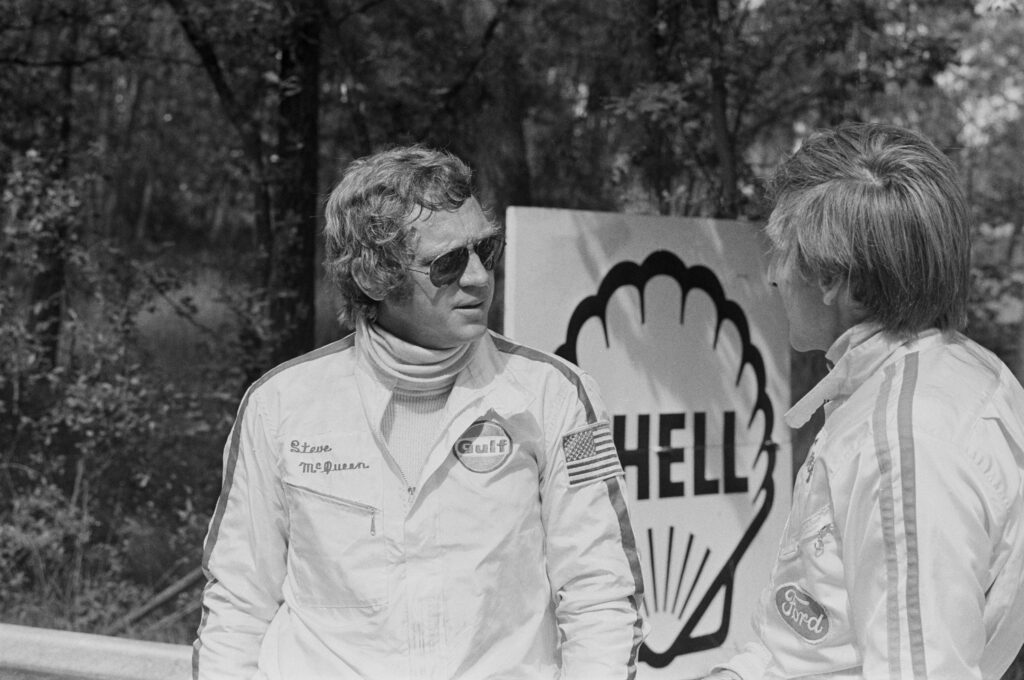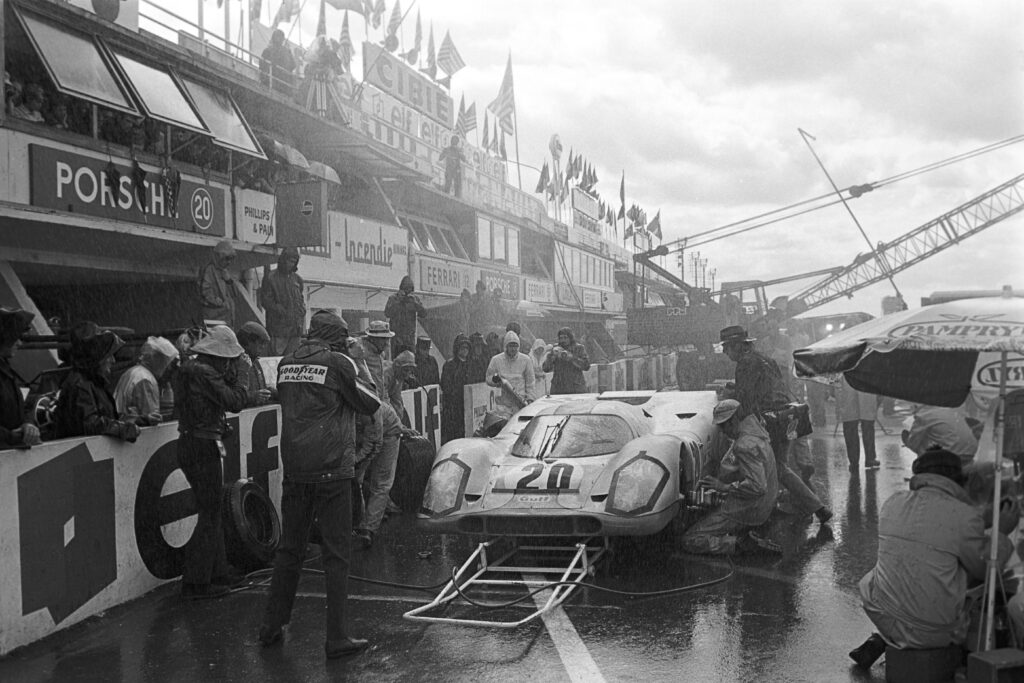McQueen might have been one of the world’s biggest movie stars at the time, but he mostly wanted to be a racing driver. He wasn’t bad at it, either—in 1970, he almost won the 12 hours of Sebring in a Porsche 908 despite having broken his foot in six places a couple of weeks earlier. The actor was originally up for Garner’s role in Grand Prix and never gave up on a motorsports movie, capitalizing on his success in the late 1960s to get his own project underway.
Objectively, as a movie, Le Mans can be considered a failure. There is no dialogue for the first half-hour, just the occasional narration from a trackside announcer that contextualizes the scale of the annual 24-hour race. There was no script for months during filming, and the film went through directors John Sturges and Alan Trustman before Lee H. Katzin finished the job.
Even so, there was an assortment of many of the actual race cars that competed in the 1970 race at Le Mans. And the town had graciously allowed McQueen’s production company to close some of the roads used by the track for more filming. The cars were mostly piloted by the elite racing drivers of the time, but McQueen drove his own character’s Porsche 917K—at racing speeds but with heavy film cameras rigged onto it—as did Siegfried Rauch in the Ferrari 512.
CBS via Getty Images
This is what happens when you let a frustrated racing driver make a movie.
CBS via Getty Images

Henri Bureau/Sygma/Corbis/VCG via Getty Images
Sadly, Le Mans was neither a box office nor critical success at the time.
Henri Bureau/Sygma/Corbis/VCG via Getty Images

Bernard Cahier/Getty Images
The film used the actual facilities at Le Mans; there was no stand-in.
Bernard Cahier/Getty Images
Sadly, Le Mans was neither a box office nor critical success at the time.
Henri Bureau/Sygma/Corbis/VCG via Getty Images
The film used the actual facilities at Le Mans; there was no stand-in.
Bernard Cahier/Getty Images
Other footage had been shot in the actual 1970 race, both trackside and onboard, thanks to the same Porsche 908 that McQueen drove earlier that year in Florida, which was used as a camera car. At times, it’s more like a documentary. But only at times. With Le Mans, there was no CGI, and no other tracks were standing in for filming.
F1 can’t quite make that claim. At times, the cars seemed to be at slightly different scales on track—a product of Pitt and Idris being filmed driving slightly smaller, slightly slower F2 cars. Perhaps my biggest issue was with some of the unsporting behavior you see on screen. Those antics work better in a comedy like Major League; in a serious drama, it feels a little like disrepute.
None of that will stop me watching F1 again, however.


